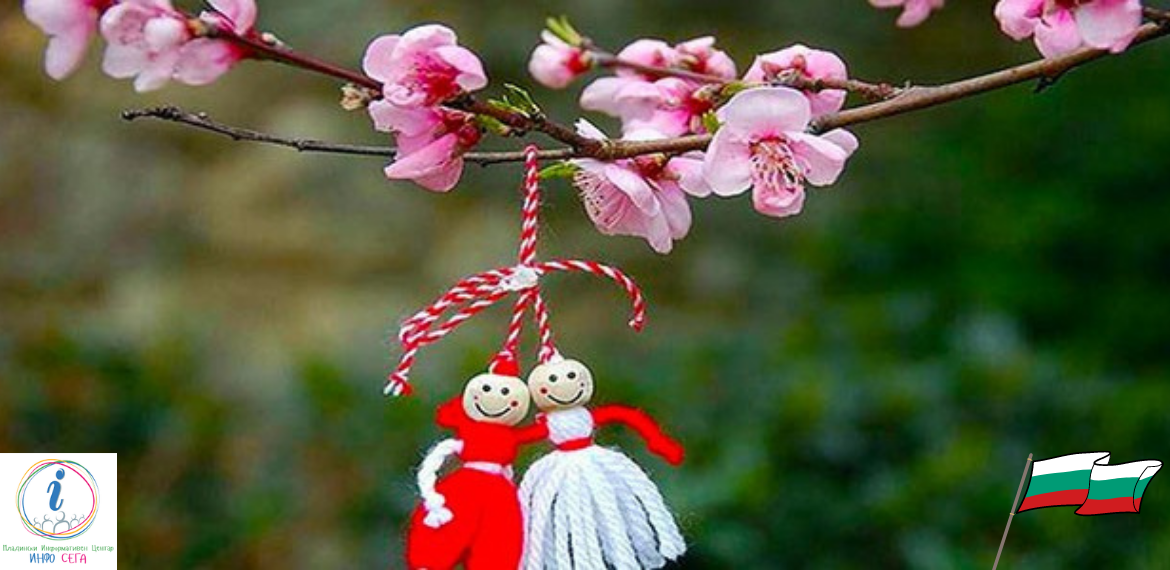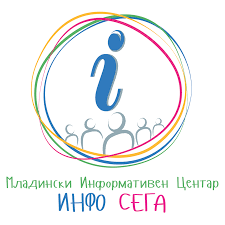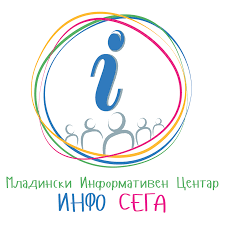
How the Bulgarians celebrate the 1st of March or “Baba Marta”
As you probably know, here at INFO SEGA, a small team of volunteers was formed, which participates in different projects with its aim toward the youth.
With the approaching arrival of March, we were interested to find out that the first day of March is celebrated in very similar ways in our countries (even Moldova included). We discussed the ways in which the holiday is celebrated in each of our countries and we have found a lot of common feats.
I was looking for an inspiration for writing, so I decided to go a little bit deeper than that and explain how exactly this holiday is celebrated in Bulgaria, because we regard at it as a significant part of our culture, and it is very popular. Almost to the point, where it has become so commercial, that we started importing our typical first-of-March amulets from distant countries like China, and put the faces of popular artists or even politicians on them – as absurd as it may seem, the commerce of these items has become a “short, but profitable endeavor” for the freelance traders, some of which of course have their own and more traditional production. Some families still prepare them at home, and of course the kids at school.
Here is some more information about the tradition itself, and what are the details and beliefs - more specifically in Bulgaria, that surround this traditional holiday.
Grandma March Day (or simply Baba Marta, Bulgarian: Баба Марта) is a holiday celebrated in Bulgaria, on March 1st. Martenitsas (мартеница), usually in the form of a wrist band, small yarn dolls, or tassels, are created by combining red and white colored threads and are worn on that day and throughout, or even after, the month of March. They are worn until a stork or a blossoming tree is seen, symbolizing the coming of spring, warmer weather, and well-being. Once the stork or a blooming tree appear, the Martenitsa is taken off and hung on a tree. It is common in the spring to see trees festooned in Martenitsas.
A Martenitsa (Bulgarian: мартеница), Macedonian: мартинка, Greek: μάρτης, Romanian: mărțiș, is a small piece of adornment, made of white and red yarn and usually in the form of two dolls, a male and a female. (In Bulgaria we call them Pijo and Penda (Пижо и Пенда), and relate them to some beautiful springtime love stories and legends.)
Older Bulgarians call it Birch Month as it is around the time that birch trees start growing leaves and giving sap. There is a great amount of folklore about Grandma March Day and the character of Baba Marta herself. The greeting exchanged on this day is Chestita Baba Marta (Bulgarian: Честита Баба Марта English: Happy Baba Marta), often shortened to ЧБМ on greeting cards.
There are various theories, suggestions, and even several legends involving real historical figures about the symbolism of the red and white colours from which Martenitsa are made. An obvious explanation, and perhaps a common belief people share, is that "red" stands for "life/birth" and "white" denotes "anew/on clear grounds". Combined together they mean "newborn", "rebirth", and "a new beginning"; a celebration of life and survival. Another popular explanation is that white stands for wisdom and red for good health, which means that anyone giving you a martenitsa is wishing you both throughout the New Year.
In March these amulets, worn around one's wrists and on their attire, can be seen almost everywhere in Bulgaria and in the neighboring regions. Being a purely pagan ritual by origin, Baba Marta Day is one of the oldest continuing traditions in Christian Europe.
This tradition is an important part of the Culture of Bulgaria and there is a similar tradition in the Republic of Macedonia, as well as in Greece, Albania, Romania and Moldova. The tradition is related to the ancient pagan history of the Balkan Peninsula and to all agricultural cults of nature. Some specific features of the ritual, especially tying the twisted white and red woolen threads, are a result of centuries-old tradition and suggest Thracian (paleo-Balkan) or possibly Hellenic or Roman origins.
An early 20th-century Bulgarian legend relates the first Martenitsi to the 7th-century Battle of Ongal between the Bulgarian Khan Asparuh and the Byzantines, which resulted in a decisive Bulgarian victory. After the battle, the Bulgarian Khan sent eagles with white threads to announce the victory to his main camp. It is told that an arrow, however, downed the messenger bird, and when the threads turned bloody during the flight, thus creating the first Martenitsa.
In folklore, Baba Marta is presented as a sister or a wife of the great long-horned beetle (golyam setchko) (January) and the small long-horned beetle (malak setchko)(February). She is always dissatisfied with her husband as they are either drunk on wine or are otherwise harmful. The old woman (bride) becomes angry, hence the weather breaks.
According to a widespread story, an old shepherd decided to rise her flocks up in the mountains during the last days of March, thinking that Baba Marta would bestow good weather on her because she was as old as Marta. Baba Marta became infuriated by being considered old, and asked her younger brother (April) to lend her a few days. April granted her wish and these days are called "borrowed days", "zaemnitsi", or "few days" in the Bulgarian folk tradition. Marta let out the strong snows and blizzards that froze the shepherd and her flocks in the mountains.
Besides the celebration on March 1st, Baba Marta is also celebrated on March 9th (Mladenci) and March 25th (Annunciation). The holidays are associated with the last days of winter and the coming of spring. On these holidays, ritual acts are performed which are believed to mellow Baba Marta's temper. Participants in these holidays are women, girls, and children. It is believed that Baba Marta is fond, old woman, and people should not cause her anger under any circumstances.
Generally, all people are giving each other a Martenitsa in Bulgaria, there is no confinement toward which member of the family is giving the other the Martenitsa first, and it is commonly considered to be an act of care, love and affection. You could be also just to give it as a present out of pure friendship or just like this to a stranger on the streets.
On this day, names like Martina or Martin celebrate the so called “name’s days”, for which no invitation is required for the close relatives, family or friends to visit their home and congratulate one for their holiday.
When we give each other a Martenitsa, we have more than just the formal popular sayings for example “White and red, cheerful and laughing” (Бели и червени, весели – засмени.) Or something like “Baba Marta was hurrying, she tied Martenitchki to everyone” (Баба марта бързала, мартенички вързала.), or with the common wishes for the Balkan countries, for long life and healthy living.
So – Happy first of March everybody, be alive and healthy, as we like to say, and don’t forget to make and give your dearest ones a Martenitchka, Martenka, μάρτης or even mărțiș and wish them well for the spring and the year to come.
Written by: Velin Nedkov

